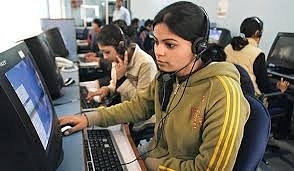
How The Maternity Benefits Bill Will Empower Women
The maternity bill is the most woman-friendly move of the government, yet.
To quote a report by Mckinsey Global Institute (November 2015) “Achieving gender equality in India would have a larger economic impact there than in any other region in the world – $700 billion of added GDP in 2025 – but comprehensive change is needed.”
In India, women traditionally play the role of a caregiver, taking care of children, elders, and handling other social responsibilities. The challenge Indian women face is when they try to juggle their various roles and careers. According to ASSOCHAM survey of 2015, many first time mothers are opting out of the workforce to raise children. This survey, which has interviewed 400 working women in the age group of 25-30 across 10 cities, says about one-fourth of women had quit their jobs to raise their first child. The point to be noted here is that a majority of the respondents had a masters degree. Approximately 30 per cent of women from Ahmedabad, Delhi, Jaipur, Lucknow and Kolkata had quit their jobs after the birth of their first child. About 15 to 20 per cent of them from Bangalore, Chennai, Hyderabad, Indore and Mumbai had put a halt to their career after childbirth.
Assocham-Thought Arbitrage Research, showed that participation of women in the workforce has fallen by 10 per cent in the last decade. The report stated that lack of flexible working conditions dissuaded the women from rejoining work. Another study revealed that 48 per cent of Indian women holding white collar jobs stopped working mid-way, whereas the Asian average stands at 21 per cent . A panel discussion at the "Women in the World Summit" stated that India’s gross domestic product (GDP) can go up by two per cent if women who had quit work due to personal responsibilities are reinstated. A report by The UN Economic and Social Commission for Asia and the Pacific stated that even a 10 per cent increase in the female workforce can increase GDP by 0.3 per cent. Hence, I think, the Narendra Modi government’s Maternity Benefit Bill 2016 is a step in the right direction.
Maternal Care And Well-Being Of Mother And Child
The Model Chapter on Infant and Young Child Feeding of the World Health Organisation carried out a research that recommended a new-born should be exclusively breastfed for the first six months. There is enough literature that suggests deaths due to pneumonia and diarrhoea can be decreased if children are breastfed in the early months. Breastfeeding has long term positive effects like building the child’s immunity against a variety of acute and chronic disorders. Research also says that breastfeeding reduces the risk of breast cancer among women. With the government, through its MAA (mother’s absolute affection) programme, pushing for right breastfeeding practices, the 26-week maternity leave will be nothing but a support for new mothers.
Sweden has 420 days of maternity leave. As a result of investment in work-family continuum, the Scandinavian country has achieved 72 per cent female employment, one of the highest among Organisation for Economic Co-operation and Development (OECD) countries. Let’s compare this with another OECD country – the USA. It has fewer maternity benefits , and 58.6 per cent of the women are part of the workforce.
Across social media platforms, I have read arguments for and against this bill. Arguments like “now women will be discriminated against while seeking employment”, “now employers will calculate the maternity leave cost plus cost of a crèche while making an offer to a woman seeking a job”. While I wouldn’t completely discard this argument, I would like to point out that this discrimination already exists, with or without this bill. The wage gap in India currently stands at 27 per cent, with the IT industry at 34 per cent. While the manufacturing industry stands at 34.9 per cent, other industries like banking, financial services and insurance, transport, logistics, communication, stand at 17.7 per cent. This shouldn’t stop us from making policies for women who want to continue working after the childbirth. I would call this bill by Modi government the most woman-friendly move of the government, yet.
As for the argument against day care facilities, many multinational corporations already have such facilities for their staff. The Human Resource departments of companies like HUL, Ernst&Young, IBM, Standard Chartered, agree that expenses incurred for running a crèche is worth it , if it helps retain talent. I agree smaller companies might have difficulties implementing this, and this move might affect employment of women in smaller firms. Maneka Gandhi recently said that she is planning to push for crèche facilities even for firms with 10 employees. I agree with the critics that such a policy would be counterproductive, and would discourage small firms from hiring women (I still maintain that it will have no impact on employment of women in big firms whatsoever) .
Another debate is about how inclusive the bill is? The bill has taken into consideration adoption; it has allowed an expecting mother to take an eight-week leave before the delivery and the remaining weeks after the delivery. But the bill has not taken into consideration unorganised sector and women in rural area. One can argue that anganwadis are already in place for the rural areas, and most people in these areas live in a joint family setup, where elders in the family take care of the children while the parents are working. The bill also has not taken into account women working in urban unorganised sector.
However, the bill is the first step in towards developing mother and child welfare policies, and can be made more inclusive as it moves along. An attempt should be made in the future to have government-run day care centres for women working in smaller firms and in urban unorganised sector.
Also Read:
A 26-Week Maternity Leave Is Patriarchy Masquerading As Women’s Welfare